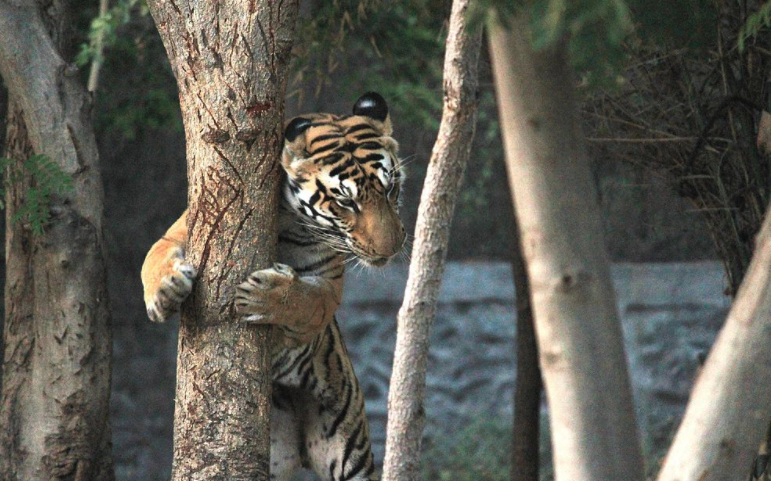- The Wildlife Institute of India has developed a DNA-analysis based method of identifying fake tiger claws.
- The new method strengthens conventional methods for testing and identifying illegal animal body parts.
- Accurate identification of animal parts will help forest officials to prosecute poachers and smugglers.
When enforcement officials from Hyderabad sent 18 samples of what was being sold as tiger claws in the illegal market to experts at the Wildlife Institute of India (WII) at Dehradun for identification, they did not realise that they were all fake. While 14 could be easily categorised as fake based on physical features, it was very difficult to comment on the origin of the remaining four. They used the newly established DNA-analysis based identification, along with the earlier methods, and realised that these were from the domestic cow and not the tiger.
The Wildlife Institute of India, Dehradun has standardised a method to identify real tiger claws from fake ones. This finding is likely to help forest officers in preparing better reports in judicial matters concerning trade in body parts from large cats. With more accurate identification, the prosecution’s case can be stronger in courts, and it will help officials to prevent illegal trade in animal body parts.
Tiger claws, like elephant ivory and rhino horns, are commodities whose trade is banned in India but are sold in the international market through the illegal route because they are used in Chinese medicine and for making religious idols and pendants. “People believe that wearing a tiger claw pendant will make them strong and lucky”, remarked S.P. Goyal, nodal officer, Wildlife Forensics Cell and now an emeritus professor at the Wildlife Institute of India.
When Goyal’s team got the 18 samples marketed as tiger claws, they resembled real ones closely in shape, size, and curvature that made it almost impossible for them to determine their origin, he adds.

Adding to the forensic arsenal
The standard procedure followed for identifying tiger claws includes an examination of its shape, size, and curvature. A part of it is also burnt to see if it smells pungent of proteins, and if it does, it is likely to be from a large animal such as the tiger.
“Since claws from a strong animal are expected to be dense, the third test to confirm its origin is by scanning it through X-rays, which helps visualise the density of the protein keratin. But again, it doesn’t guarantee that the identification is absolutely correct,” explained Goyal, who has worked for three decades identifying animal products seized by the customs, forest officers, police and wildlife laws enforcement organisations, and serving as an expert witness in courts.

“There was an urgent need to develop a standard protocol to identify real tiger claws. This was needed to help us file the correct statistics on illegal tiger claws trade in the country and punish those who are guilty,” he said.
Goyal’s team incorporated DNA-based analysis in routine examination to differentiate real claws from the fake ones. “By analyzing the DNA sequence of two genes – cytochrome-b and 16S ribosomal RNA – in samples and comparing it to a reference database, we could determine if they were from a tiger or from any other animal such as domestic cattle, pig, hog deer, or related cats such as the leopard or lion.”
A database of genetic sequences
Claws constitute 4% of the almost 3000 illegal animal parts that the Wildlife Forensics Cell receives from police, forests officials, and wildlife-surveillance organisations every year. The new technique to distinguish fake from real tiger claws developed at the WII is helping officials identify accurately. Neighbouring countries Nepal and Bangladesh have started using the method to curb illegal animal organ trade in their country.
According to Goyal, the WII is working to develop a database of genetic sequences of animals whose organs are traded in the international market. This will enable forest officials to identify seized animal parts and file judicial reports correctly. This will help curb the llegal trade of tiger claws and other animal parts in the country by a significant number.

Citation:
- Sharma, V.V., Sharma, C.P., Kumar, V.P., Goyal S.P. (2016). Pioneer identification of fake tiger claws using morphometric and DNA-based analysis in wildlife forensics in India. Forensic Science International 266: 226-233. doi: http://dx.doi.org/10.1016/j.forsciint.2016.05.024